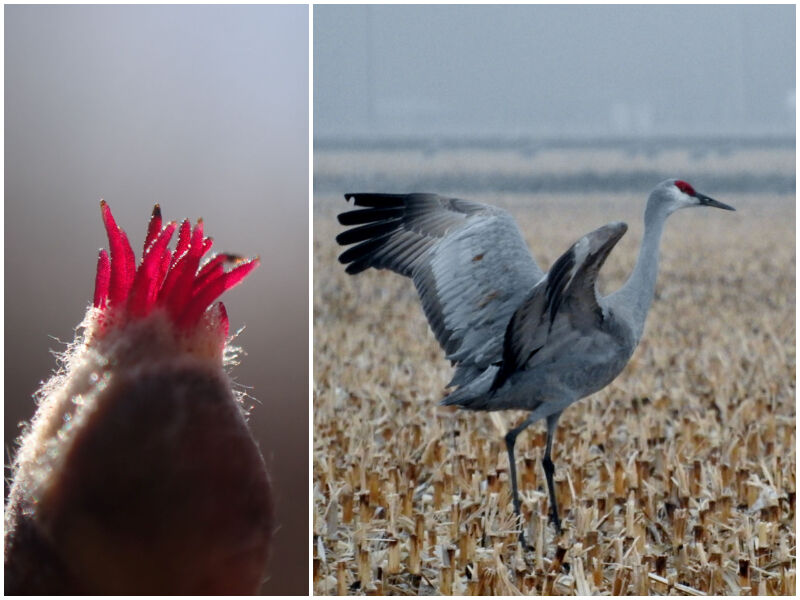What if we stopped calling trees, water, minerals, fruits, fish, soil, and everything else Natural Resources and started using the term Earthly Gifts?
This was one of the first questions posed by Dr. Robin Wall Kimmerer at a talk last month in La Crosse, WI. Kimmerer is the author of Braiding Sweetgrass: Indigenous Wisdom, Scientific Knowledge and the Teachings of Plants. Published in 2013 without much fanfare, this amazing book slowly gained momentum by word of mouth, and finally reached the bestseller list in 2020. “I’d like to be named Head of the Department of Earthly Gifts,” she quipped, not truly joking.
As spring turned to winter and back to mud season in the days since that talk, I’ve been thinking about Robin’s words…and finding her ideas echoed elsewhere. Kathleen Dean Moore is another of my favorite authors, who, like Kimmerer, won the Sigurd Olson Nature Writing Award. I’m often delighted by how Moore and Kimmerer arrive at the same conclusions from their different backgrounds—Moore is a Western philosopher, and Kimmerer gains wisdom from her Indigenous heritage.
They both encourage us to appreciate gifts from the Earth.
Moore wrote, “The Earth offers gift after gift—life and the living of it, light and the return of it, the growing things, the roaring things, fire and nightmares, falling water and the wisdom of friends, forgiveness…Failing to notice a gift dishonors it, and deflects the love of the giver…But to turn the gift in your hands, to say, this is wonderful and beautiful, this is a great gift—this honors the gift and the giver of it…”
Here are a few of the Earthly Gifts I’ve received recently. Please admire them with me, and then reflect on a few of your own.
1. Voices and laughter echo throughout the Museum even though we’re closed. Hammers pound, drills squeal, paintbrushes swish. We’ve asked our volunteers to do the oddest things: install a giant slide indoors; adhere a big sticker printed with the face of a marten to our doors; line the entire exhibit hall with fabric printed to look like the inside of a snowbank; enlarge animal tracks to 12x life size and then glue them to strips of chiffon and hang them from the ceiling; write flute arias to represent ten beings who live beneath the snow, and so much more. The list of volunteers grows longer every day, and the table can barely accommodate us all at lunch. As it turns out, it takes a village to turn an exhibit hall into the Subnivean Zone at 12x life size. “Anaamaagon: Under the Snow” opens in May, thanks to the work of many talented volunteers, Museum staff, and professional artists!
2. On a rare day away from the commotion, my friend and I hike through birch woods below a craggy, mossy cliff. The sound of a hundred little bells makes us look up from the rocky path, and we discover that the trees are twinkling with the movement of birds. As we walk, a huge flock of redpolls tumbles ahead of us. They hop and poke about the leaf litter looking for seeds as their friends fly just ahead; then when the back of the flock reaches the ground birds, they flutter up. The beings ahead of them flutter up. The beings ahead of those flutter up. The movement is delicate and overwhelming. My heart flutters up, too. We shake our heads in wonder.
3. Most plants—at least the smart ones—are still holding their buds tightly closed against the possibility of frost. But I know to look more closely. Leaning into a certain shrub, I carefully examine the tip of each brown bud. It only takes a few tries before I find what I’m looking for: tiny, translucent, red tentacles squeeze their way out of the bud scales. Shifting around, I position the Sun just so, and the pistils of a beaked hazel flower begin to shine as if from within. As if they are the light inside a film projector, memories begin to play: spring in California and the comfort at finding an old friend in a new place; the pandemic spring when I walked down my road every day for two weeks straight, waiting for them to emerge from their homes, too; and countless other tiny scavenger hunts when I looked for these tiny flowers and found joy.
4. Awake in the darkness, I stress about falling back to sleep. Then the loons begin. Soft wails echo across the lake and seep in through my windows. These are the first I’ve heard this spring. Now I’m grateful I didn’t snore right through them.
5. On a walk, the rattling bugle of a sandhill crane raises the hairs on my neck. I follow the sound across a field, between trees, and onto the edge of bog. Through a screen of alder twigs I watch a single bird. Neck stretching, wings flapping, they call again and again. Then, with a few running hops they are airborne on wings so large I can feel the breeze they stir in my soul.
“We are called to live lives of gratitude, joy, and caring, profoundly moved by the bare fact that we live in the time of the singing of birds.” – Kathleen Dean Moore, Wild Comfort
Emily’s award-winning second book, Natural Connections: Dreaming of an Elfin Skimmer, is available to purchase at www.cablemuseum.org/books and at your local independent bookstore, too.
For more than 50 years, the Cable Natural History Museum has served to connect you to the Northwoods. The Museum is closed until May 1 to construct our new exhibit: “Anaamaagon: Under the Snow.” Our Summer Calendar of Events is open for registration! Follow us on Facebook, Instagram, YouTube, and cablemuseum.org to see what we are up to.
Last Update: Apr 18, 2024 7:10 am CDT

















